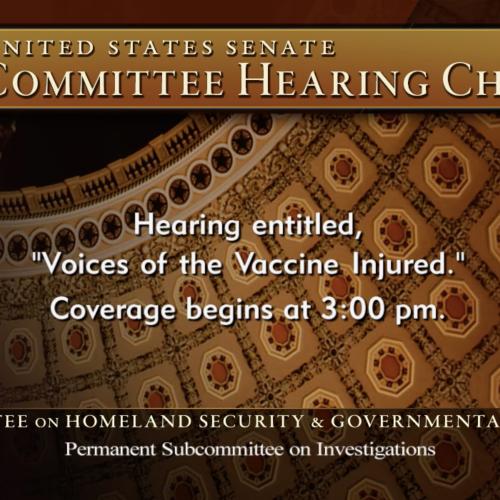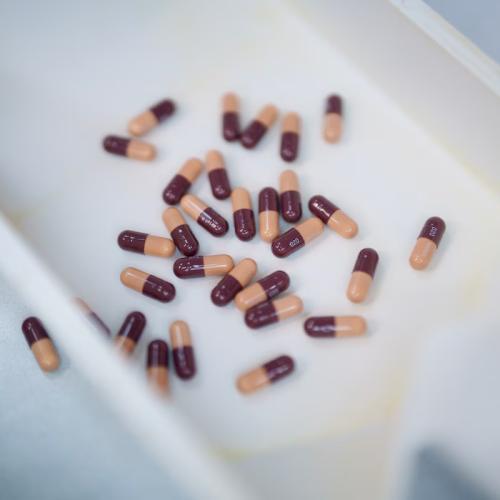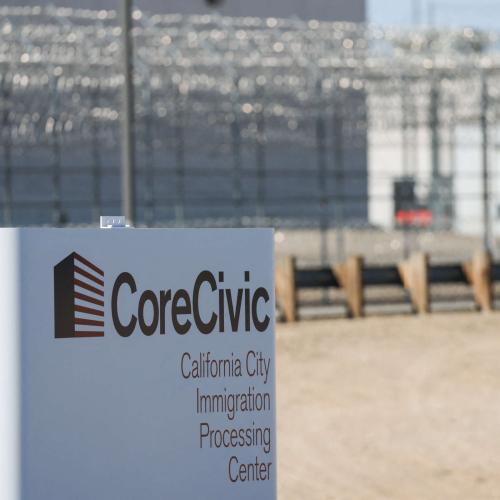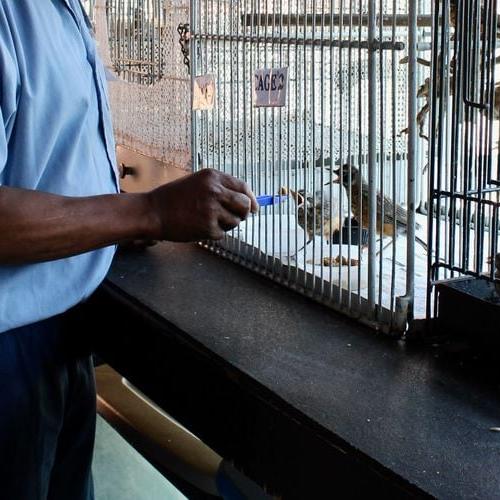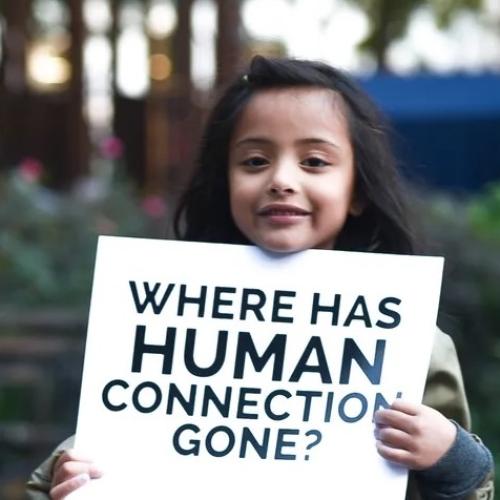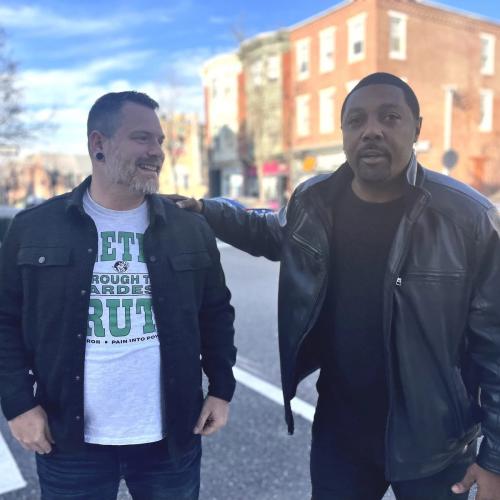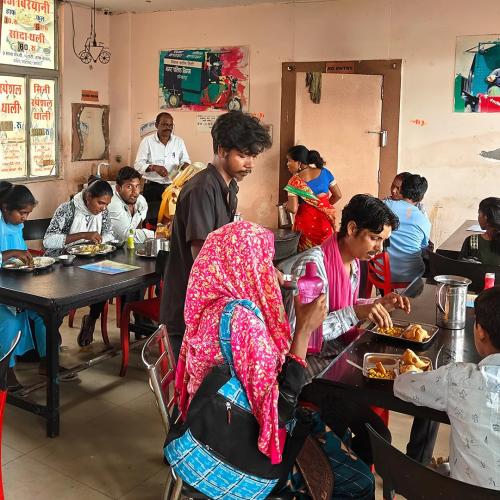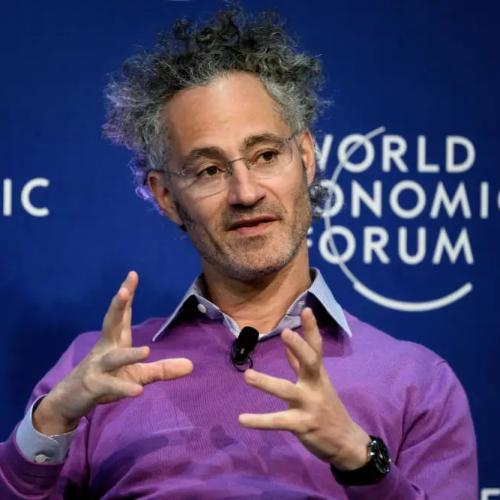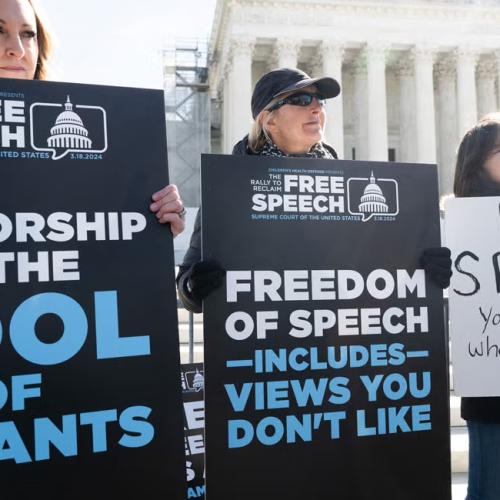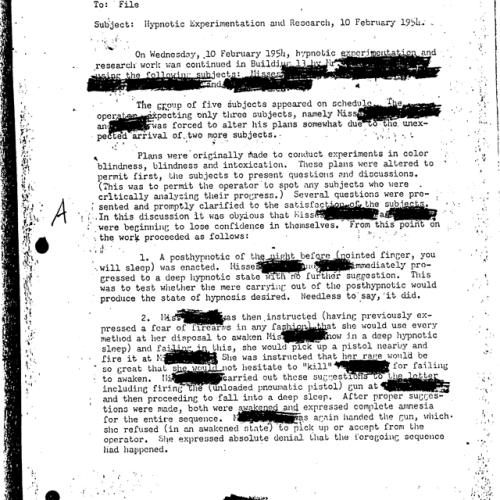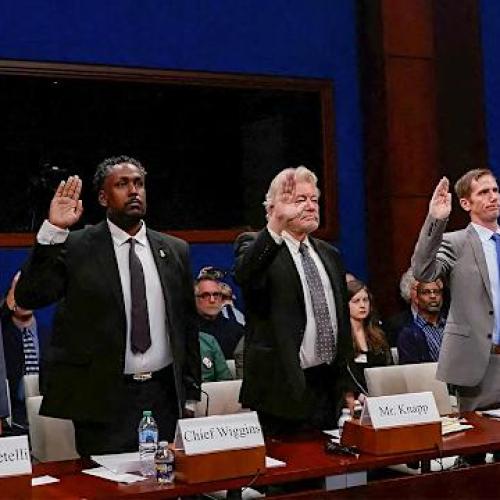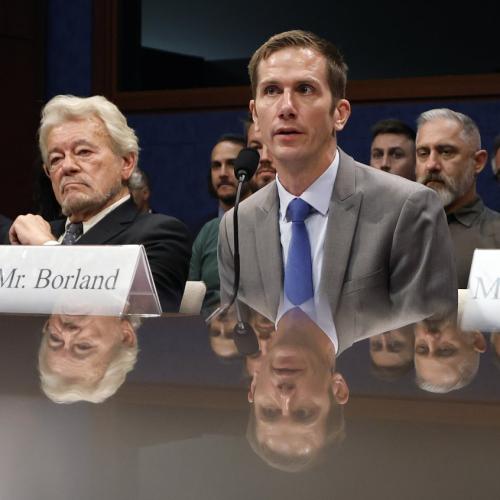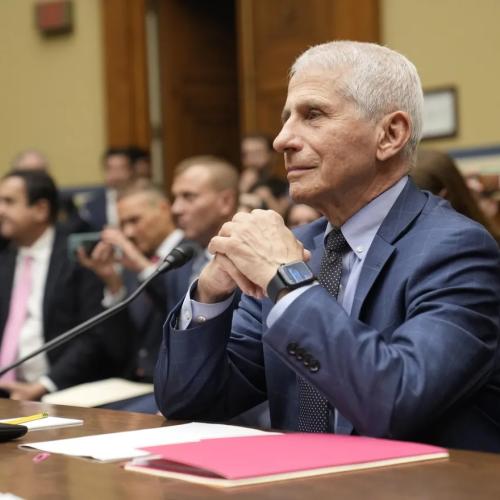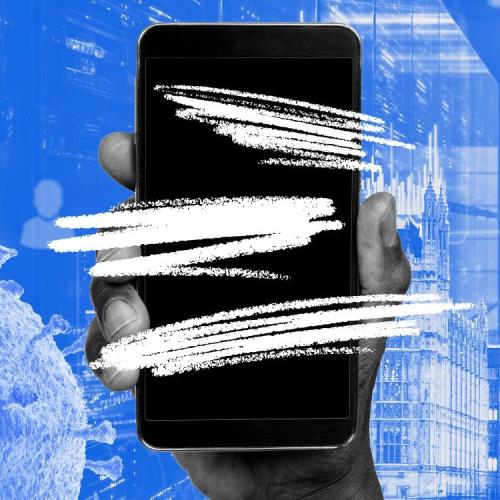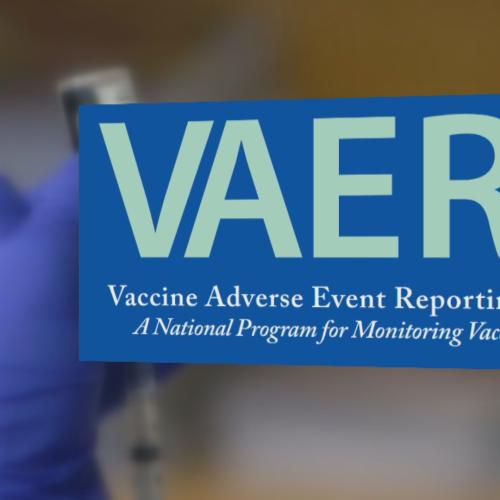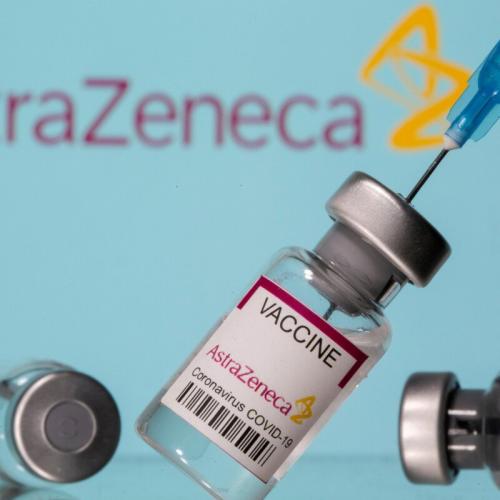News StoriesExcerpts of Key News Stories in Major Media
Below are key excerpts of revealing news articles from reliable news media sources. If any link fails to function, a paywall blocks full access, or the article is no longer available, try these digital tools.
For further exploration, delve into our comprehensive Information Centers.
Environmental and Indigenous activists declared Thursday that “geoengineering fails again,” welcoming the shutdown of a project that aimed to use “a reflective material to protect and restore Arctic sea ice.” “While our climate impact simulations have shown promising results ... recent ecotoxicological tests have revealed potential risks to the Arctic food chain,” the [Arctic Ice Project] team said. Panganga Pungowiyi, climate geoengineering organizer at Indigenous Environmental Network, called the decision “long overdue.” “We are concerned for the community members in Utqiavik who were made to spread football fields of this material onto their frozen lake,” Pungowiyi explained. “Our concerns about the reckless use of harmful materials were dismissed. We continually showed up in defense of free prior and informed consent, and made our presence known.” “We continue to state firmly that nature is not a laboratory; it is a living entity we are in relationship with,” the organizer added. “Geoengineering approaches do nothing to address the root causes of the climate crisis and instead delay real solutions, offering a free pass to polluters,” [said Mary Church at the Center for International Environmental Law]. “Following the recent reaffirmation of the global moratorium on geoengineering at the U.N. biodiversity summit in Colombia, governments need to act to prevent harmful outdoor experiments.”
Note: In our latest Substack, "Geoengineering is a Weapon That's Been Rebranded as Climate Science. There's a Better Way To Heal the Earth," we present credible evidence and current information showing that weather modification technologies are not only real, but that they are being secretly propagated by multiple groups with differing agendas. For more along these lines, read our concise summaries of news articles on geoengineering.
Farmers Alberto Gómez, José Castillo and Javier Castillo arrive with their selected seeds, stored in shigras – hand-woven shoulder bags – as has been done for generations. In San Lorenzo, they call themselves “seed guardians” for their role in protecting this living heritage and passing it down the generations. [They] are among the farmers supporting draft legislation, under review by the lower house of the Colombian parliament, that would ban genetically modified (GM) seeds, which they claim threaten their traditions, livelihoods and food sovereignty. The initiative has the backing of Indigenous, peasant and environmental organisations, but faces opposition from agribusiness and sectors that support GM. In San Lorenzo, the rejection of GM seeds evolved into organised political opposition after people detected the use of such seeds in nearby crops in 2012. They then feared that GM seeds might cross-pollinate with their native varieties, altering their traits and threatening their ability to preserve them. The alarm prompted them to act. They travelled from village to village, hosted workshops, collected 1,300 signatures and drafted a citizen-led proposal. The initiative was backed by the Seed Guardians of Life Network, a national platform comprising farming and environmental groups, as well as local collectives and the municipal government. It was formally submitted to the town council. In 2018, San Lorenzo declared itself a GMO-free territory.
Note: Explore more positive stories like this on healing our bodies and healing the Earth.
California has long led the way on school meals. In 2022, it became the first state in the country to make school meals free for all students, regardless of income. Many districts have implemented farm-to-school programs to bring local foods into the cafeteria. And last year, months before the “Make America healthy again” movement would make its way to the White House, it became the first state in the nation to ban six synthetic food dyes from school meals. This week, it passed legislation that will put it in the lead on school meals in yet another way – banning ultra-processed foods. On Friday, California lawmakers passed a bill that will define, and then ban, ultra-processed foods from school meals. Ultra-processed foods, or UPFs, are industrially formulated products that are often high in fats, starches, sugars and additives, and make up 73% of the US food supply today. The text of California’s new law defines a UPF as any food or beverage that contains stabilizers, thickeners, propellants, colors, emulsifiers, flavoring agents, flavor enhancers, nonnutritive sweeteners or surface-active agents – and has high amounts of saturated fat, sodium or added sugar, or nonnutritive sweeteners. “We actually had food service directors come in and testify,” [state assembly member Jesse Gabriel] said. “Not only had it not cost them more, but in many districts they had actually saved money by switching to healthier alternatives.”
Note: Explore more positive stories like this on healing our bodies and reimagining the economy.
The latest figures and the statistical yearbook "The World of Organic Agriculture" was presented on 11 February 2025 at BIOFACH, the world's leading trade fair for organic food in Nuremberg. The global organic farming area increased by 2.5 million hectares in 2023, reaching almost 99 million hectares. The sales of organic food reached nearly 136 billion euros in 2023. The 26th edition of the yearbook "The World of Organic Agriculture", jointly published by FiBL and IFOAM – Organics International, shows that the growth in area and number of farms in 2023 exceeded that of previous years, particularly due to increases in Latin America. Data were provided by 188 countries. By the end of 2023, 98.9 million hectares were managed organically, marking a 2.6 percent increase (+2.5 million hectares) from 2022. Latin America experienced the largest increase, adding 1 million hectares (10.8 percent growth), while Africa recorded the highest relative growth, expanding by 24 percent to reach 3.4 million hectares. Oceania remains the leading region for organic farming, with 53.2 million hectares, accounting for more than half of the global organic area. It is followed by Europe, which has 19.5 million hectares, and Latin America, with 10.3 million hectares. By country, Australia leads with 53 million hectares, followed by India (4.5 million hectares) and Argentina (4 million hectares). There are notable increases observed in Vietnam, Sri Lanka, and Burkina Faso.
Note: Don't miss this global organic agriculture graphic. Explore more positive stories like this on healing our bodies and healing the Earth.
Jeffrey Epstein was a very wealthy man, but exactly how wealthy and where that money came from remains shrouded in mystery. Newly unearthed emails last week shone light on Epstein’s role as freelance client development officer, acting as a channel between political figures and business titans, greasing up the former with lifestyles they could not afford and the latter with avenues of political influence. Figures in Epstein’s network of billionaires, politicians, celebrities, royalty and intellectuals were assembled into schemes of influence. The spheres of influence Epstein created, emails showed, relied simultaneously on access and gifts Between his collection of lavish homes in New York, Palm Beach and Paris, two private Caribbean islands, two jets and helicopter, Epstein held nearly $380m in cash and investments, according to his estate. That wealth arrived suddenly. Until the end of the 90s, Epstein was living in a two-bedroom apartment on Manhattan’s Upper East Side close to the river. It was only when Maxwell arrived from London that his lifestyle was dramatically elevated. Epstein moved to a townhouse on 68th Street and later to a 28,000-sq-ft mansion on 71st Street, later transferred to him by Wexner in 2011. Steven Hoffenberg, a former business partner of Epstein convicted of running a Ponzi scheme, claimed that Maxwell’s father, the disgraced press baron Robert Maxwell, introduced his daughter to Epstein in the late 1980s. A 2022 Miami Herald exposé showed complex Maxwell family transactions passing through companies in Jersey, the British Virgin Islands and Panama that it called “a decades-long modus operandi of financial deception”.
Note: There is significant evidence suggesting that Robert Maxwell was a superspy for Mossad, Israel's intelligence and covert operations unit. US attorney Alexander Acosta was once told Epstein “belonged to intelligence, and to leave it alone.” Read our comprehensive Substack investigation covering the connection between Epstein’s child sex trafficking ring and intelligence agency sexual blackmail operations.
Jeffrey Epstein ... helped JPMorgan orchestrate an important acquisition. He introduced executives to men who would become lucrative clients, like the Google co-founder Sergey Brin, and to global leaders, like Prime Minister Benjamin Netanyahu of Israel. At Epstein’s behest, JPMorgan set up accounts — into which he routinely transferred huge sums — for young women who turned out to be victims of his sex-trafficking operations. It wired his funds overseas. It even paid him millions of dollars. But in the summer of 2019, Epstein was arrested. Federal prosecutors charged him with sex trafficking. JPMorgan went into damage-control mode. It filed a report with federal regulators that retroactively flagged as suspicious some 4,700 Epstein transactions — totaling more than $1.1 billion and including hundreds of millions of dollars in payments to Russian banks and young Eastern European women who were brought to the United States. Banks are required to file such reports in real time to alert law enforcement to things like money laundering, sex trafficking and drug dealing. Doing it after the fact might have provided JPMorgan with legal cover, but it did nothing to help identify Epstein’s crimes as they were happening. The fallout for JPMorgan has been limited. In 2023, it paid $290 million to settle a lawsuit brought by roughly 200 of Epstein’s victims and an additional $75 million to resolve related litigation brought by the U.S. Virgin Islands.
Note: This article is also available here. According to a Guardian article, "Epstein introduced [JPMorgan] bank executives to some figures who would become clients, including the Google co-founder Sergey Brin, and to global leaders, such as the Israeli prime minister, Benjamin Netanyahu, Bill Gates, Elon Musk and the Emirati billionaire Sultan Ahmed bin Sulayem." Read our comprehensive Substack investigation covering the connection between Epstein’s child sex trafficking ring and intelligence agency sexual blackmail operations.
The government has released 33,295 pages of Jeffrey Epstein-related records that it received from the U.S. Department of Justice. “Today, the House Committee on Oversight and Government Reform released 33,295 pages of Epstein-related records that were provided by the U.S. Department of Justice,” the committee wrote in a statement. “On August 5, Chairman Comer issued a subpoena for records related to Mr. Jeffrey Epstein, and the Department of Justice has indicated it will continue producing those records while ensuring the redaction of victim identities and any child sexual abuse material. Epstein-related documents can be found here.“ “The victims themselves have stated this is a lot bigger than I think anyone anticipated,” Rep. Anna Paulina Luna, R-Fla., said after the meeting. “There are some very rich and powerful people that need to go to jail ... it is very much so a possibility that Jeffrey Epstein was an intelligence asset working for our adversaries, but also, the question we have is, ‘How much did our own government know about it?'” On Wednesday, a pair of bipartisan lawmakers will host a news conference at the Capitol to advance their efforts to force the Trump administration to release all of the government’s Epstein files. To ramp up the pressure, the lawmakers — Reps. Thomas Massie, R-Ky., and Ro Khanna, D-Calif. — will be joined by several Epstein accusers.
Note: When undeniable evidence of Epstein’s child sex trafficking ring came to court in 2008, the entire system moved to shield him and his associates from the gravity of his crimes. Major news outlets suppressed key evidence. Prosecutors shut down an FBI investigation and gave him a sweetheart deal. Alexander Acosta, the US attorney who signed off on the deal, later said he was told Epstein “belonged to intelligence, and to leave it alone.” Even after his conviction as a sex offender, Epstein was meeting with top officials at the CIA and the White House. Read our comprehensive Substack investigation covering the connection between Epstein’s child sex trafficking ring and intelligence agency sexual blackmail operations.
After House Democrats released a scrapbook gifted to Jeffrey Epstein for his 50th birthday, questions have emerged about whether the late child-sex trafficker’s proclivities were an open secret. Indeed, the so-called birthday book, which was compiled by Epstein accomplice Ghislaine Maxwell, contains multiple letters that are laden with sexual innuendo – including one alleged missive from Donald Trump. A mysterious message, typed on a naked female torso, quotes Trump as stating: “We have certain things in common, Jeffrey.” Part of this birthday note implored that “every day be another wonderful secret”. “Enigmas never age, have you noticed that?” a quote on the drawing attributed to Trump also stated. Trump is listed under the “friends” section of the book’s table of contents, as are former president Bill Clinton and attorney Alan Dershowitz. Jean-Luc Brunel, a former model agency head suspected of supplying young girls to Epstein, was also included in the friends section. Maxwell introduced Brunel to Epstein in the 1980s. Brunel, who was arrested in 2020 by French authorities on suspicion of rape, was found hanged in prison while awaiting trial. Epstein died in jail pending trial six years ago. Several familiar with the 1980s and 1990s scene inhabited by moneyed men, such as Epstein, said that mistreatment of women and girls was well-known. [Model] Carré Otis ... said she did not meet Epstein but “definitely knew his name” from a whisper network among her colleagues.
Note: When undeniable evidence of Epstein’s child sex trafficking ring came to court in 2008, the entire system moved to shield him and his associates from the gravity of his crimes. Major news outlets suppressed key evidence. Prosecutors shut down an FBI investigation and gave him a sweetheart deal. Alexander Acosta, the US attorney who signed off on the deal, later said he was told Epstein “belonged to intelligence, and to leave it alone.” Even after his conviction as a sex offender, Epstein was meeting with top officials at the CIA and the White House. Read our comprehensive Substack investigation covering the connection between Epstein’s child sex trafficking ring and intelligence agency sexual blackmail operations.
The emails from [Jeffrey] Epstein’s inbox span a 20-year timeframe, but the message traffic is most active between 2005 and 2008. (There are indications that many of the emails were deleted.) Epstein’s abuse has been well documented, but the emails detail a methodical and callous approach he took to recruiting young women. His female contacts and assistants sent him steady streams of photographs and descriptions of women like this one: nice personality, student, a little curvy, Russian, 19. Epstein often replied with a brief yes or no. Sometimes he was more expansive: “fat and Asian sorry,” he wrote in one email. One exchange referencing [Donald] Trump came on Sept. 14, 2006, two months after Epstein was charged in Florida with solicitation of prostitution. It includes a list of 51 politicians, business executives and Wall Street powerbrokers. The list includes people who’ve previously been linked to Epstein, including Jimmy Cayne, former chief executive of Bear Stearns; Jes Staley, who would later be named the CEO of Barclays; and Trump. “Plse review list and add or remove peeps,” [Ghislaine] Maxwell wrote. “Remove trump,” Epstein responded. In 2014, one of Epstein’s victims, Virginia Giuffre, accused Maxwell of conspiring with Epstein to sexually abuse underage girls. Shortly thereafter, Maxwell sent Epstein a request: “Can you send me the file on Virginia?”
Note: It was reported that Virigina Giuffre killed herself earlier this year, even though she had once declared, "In no way, shape or form am I suicidal ... I have made this known to my therapist and GP – If something happens to me – in the sake of my family do not let this go away and help me to protect them. Too many evil people want to see me [quieted]."
Bernadette Spofforth [was] detained for 36 hours in July 2024. Three girls had just been murdered in Southport, England, at a Taylor Swift-themed dance party. But Spofforth was not under suspicion for the crime. Instead, horrified, and in the fog of a developing tragedy, she’d reposted on X another user’s content blaming newly arrived migrants for the ghastly crime — clarifying in her retweet, “If this is true.” Hours later she realized she may have received bad information and deleted the post — but it had already been seen thousands of times. The murders resulted in widespread civil unrest in the UK, where mass migration is a central issue for citizens. Four police vehicles arrived at her home days later. Spofforth, 56, a successful businesswoman from Chester, was placed under arrest. Her story is one repeated almost hourly in the UK, where data suggests over 30 people a day are arrested for speech crimes, about 12,000 a year, under laws written well before the age of social media that make crimes of sending “grossly offensive” messages or sharing content of an “indecent, obscene or menacing character.” Social media continues to be flooded with videos of British cops banging on doors in the middle of the night and hauling parents off to jail—all over mean Facebook posts. On Tuesday, the US State Department’s annual Human Rights Report slammed British authorities’ “serious restrictions on freedom of expression.”
Note: For more along these lines, read our concise summaries of news articles on government corruption and censorship.
The picture many people have of nongovernmental organizations (NGOs) is overwhelmingly positive. And yet there is now overwhelming evidence that governments have funded and in some cases created NGOs to demand politically-motivated, unconstitutional, and dangerously ideological censorship. Other journalists, researchers, and I have documented how government intelligence and security agencies have done this in the US, Europe, and Brazil. Those agencies work with existing or new NGOs to circumvent free speech protections, including the First Amendment, and legitimize what is politically and ideologically motivated as apolitical and non-ideological. This can accurately be described as “censorship-by-proxy.” Censorship by proxy operates similarly in every nation. NGOs claiming to be independent of governments, but funded by, created by, and working with government agencies, demand censorship based on their “independent reports,” “fact checks,” and “analyses.” Often, the NGO “fact checks” are themselves misinformation, including misrepresentations of opinions as facts. Twitter and Facebook created special “portals” for government-funded NGOs to “flag” posts they wanted censored. The NGOs, staffed with ostensibly former military and intelligence employees, sought and won mass censorship with an aim at promoting the narratives they wanted and stomping out narratives they didn’t want.
Note: For more along these lines, read our concise summaries of news articles on government corruption and censorship.
In May, prosecutors in Seattle charged a sheriff’s deputy with raping a 17-year-old girl. The deputy met the teenager while he was an adviser in his department’s youth mentorship program known as Explorers. Law enforcement departments across the country have Explorer programs — overseen by Scouting America, formerly known as Boy Scouts of America — and they have a history of sexual abuse and misconduct. Ride-alongs, in which young people accompany officers on their patrol shifts, are a key perk of the Explorers program. They are also a gateway to abuse. The Marshall Project examined hundreds of abuse allegations in law enforcement Explorer programs and found that about a quarter of them involved officers on ride-alongs with teens — some as young as 14 years old. The Marshall Project reviewed ... the 217 cases currently in our database. The review found that at least a third of the cases involved alleged abuses in an officer’s vehicle. More specifically, about a quarter of the cases involved officers grooming, harassing, or sexually assaulting young people during Explorer ride-alongs. A 2003 report by the University of Nebraska at Omaha found that more than 40% of the cases of officers abusing teenage girls that researchers identified nationwide involved police Explorer programs. “And it’s just like other types of police crime, we don’t see a whole lot of changes as a result of police reforms,” [said criminologist Philip Stinson].
Note: For more along these lines, read our concise summaries of news articles on police corruption and sexual abuse scandals.
Erb and his cousin raised money from investors, bought homes in places like the Chatham-Arch neighborhood in Indianapolis ... and rented them out. He was not the first New York finance person to profit from single-family rentals across the United States. The private equity firm Blackstone (commonly confused with BlackRock) more or less invented this buy-to-rent strategy in 2012. It's now a public company valued at more than $18 billion. The response to this development — of Wall Street buying Main Street ... has been bipartisan, populist and patriotic condemnation. Both JD Vance and Kamala Harris called for bans on these corporate landlords. Homeownership has been a primary way that middle-class families build wealth. But now private equity was outbidding aspiring homeowners, making it more expensive to buy a home and pocketing the appreciation in home values. During the Great Recession ... the U.S. had a glut of single-family homes in foreclosure. Many were auctioned off en masse, including by the federal government, which organized auctions for investors like Blackstone and even provided a $1 billion loan guarantee to encourage Blackstone to buy. This allowed private equity firms (which raise money from wealthy families, pension funds and other organizations to seek out profits, often by buying private companies) and real estate investors to efficiently and cheaply buy, say, a dozen similar homes located in the same Phoenix suburb.
Note: For more along these lines, read our concise summaries of news articles on financial inequality and financial system corruption.
Parents with small children, teenagers, and senior citizens clustered outside the door and waited to hear their ticket numbers called. They weren’t there for books. They came to shop for groceries. Connected to the [Enoch Pratt Library], the brightly painted market space is small but doesn’t feel cramped. Massive windows drench it in sunshine. In a previous life, it was a café. Now, shelves, tables, counters, and a refrigerator are spread out across the room, holding a mix of produce and shelf-stable goods. On any given day, there’s a range of produce, like collard greens, apples, onions, radishes, potatoes, and cherry tomatoes, plus eggs, orange juice, rice, bread, and treats like cookies and peanut butter crackers. As they exited, shoppers did not need to pull out their wallets: No one pays at Pratt Free Market. Launched in the fall of 2024, Pratt Free Market opens its doors every Wednesday and Friday and serves around 200 people per day. Anyone can pick up food at the store without providing identification or meeting income requirements. For Baltimore residents, 28 percent reported experiencing food insecurity last year—twice the national average. Pratt Free Market ... offers a mix of everything—from healthy, fresh produce to sweets. And every fourth Friday, the marker turns into “Pantry on the Go!”, a farmers’ market-style setup outside the library that offers fruits and vegetables. Last month ... they handed out onions, sweet potatoes, watermelons, celery, and apples.
Note: Explore more positive stories like this on reimagining the economy.
The Arcadia Center for Sustainable Food figured that veterans were perfectly cut out for farming, as the average vet is 45% more likely to start their own business, and aside from being physically fit, are used to enduring discomfort, waking up early, and being both self-reliant and a team player. Looking to connect their need to perform a service for their communities with the needs of thousands of retiring military who reenter society every year, Arcadia created the Veteran Farmers Training Program. Just a few miles from the Pentagon in Arlington, Arcadia trains veterans in the fundamentals of agriculture both in the field and in the class room. Ephesia Sutton was in the US Army for 20 years, and now trains veterans like herself how to grow nutritious produce for their families and communities. “I left the military with PTSD, depression, and anxiety, and I would rather be anywhere else when dealing with those symptoms. This is the place that relaxes me,” said Sutton told Stars and Stripes from the fields of collard greens, cucumbers, bitter melon, peppers, spinach, kale, and tomatoes. “Knowing the work that I’m doing every time I put my hands in the soil is going to provide for a family, for somebody in this community, that just gives me the push to be out here,” Sutton said. Military spouses ... often have to put their own lives on hold whilst their partners deploy. These too are finding new purpose and fulfillment among the rows of fruits and vegetables.
Note: Explore more positive stories like this on healing our bodies and healing the war machine.
As I approach India's first Garbage Cafe on a cloudy and foggy winter day in early 2025, the smell of hot samosas immediately makes the place feel cosy. Inside, people are sitting on wooden benches holding steel plates filled with steaming meals, some chatting, others eating quietly. Every day, hungry people arrive at this cafe in Ambikapur, a city in the state of Chhattisgarh in central India, in the hope of getting a hot meal. But they don't pay for their food with money – instead, they hand over bundles of plastic such as old carrier bags, food wrappers and water bottles. People can trade a kilogram (2.2lb) of plastic waste for a full meal that includes rice, two vegetable curries, dal, roti, salad and pickles, says Vinod Kumar Patel, who runs the cafe on behalf of the Ambikapur Municipal Corporation (AMC), the public body which manages the city's infrastructure. Every morning, [Rashmi Mondal] sets out early on the streets of Ambikapur in a search for discarded plastic – anything from old food wrappers to plastic bottles. For her, collecting such detritus is a means of survival. "I've been doing this work for years," Mondal says, looking at the small pile of plastic she has gathered. Previously, Mondal used to sell the plastic she collected to local scrap dealers for just 10 Indian rupees (£0.09/$0.12) per kilogram – barely enough to survive on. "But now, I can get food for my family in exchange for the plastic I collect. It makes all the difference in our lives."
Note: Explore more positive stories like this on reimagining the economy.
Loneliness not only affects how we feel in the moment but can leave lasting imprints on our personality, physiology, and even the way our brains process the social world. A large study of older adults [found] that persistent loneliness predicted declines in extraversion, agreeableness, and conscientiousness—traits associated with sociability, kindness, and self-discipline. At the same time, higher levels of neuroticism predicted greater loneliness in the future, suggesting a self-reinforcing cycle. Although social media promises connection, a large-scale study published in Personality and Social Psychology Bulletin suggests that it may actually fuel feelings of loneliness over time. Researchers found that both passive (scrolling) and active (posting and commenting) forms of social media use predicted increases in loneliness. Surprisingly, even active engagement—often believed to foster interaction—was associated with growing disconnection. Even more concerning was the feedback loop uncovered in the data: loneliness also predicted increased social media use over time, suggesting that people may turn to these platforms for relief, only to find themselves feeling even more isolated. Lonely individuals also showed greater activation in areas tied to negative emotions, such as the insula and amygdala. This pattern suggests that lonely people may be more sensitive to social threat or negativity, which could contribute to feeling misunderstood or excluded.
Note: For more along these lines, read our concise summaries of news articles on mental health and Big Tech.
Everywhere they look, they find particles of pollution, like infinite spores in an endless contagion field. Scientists call that field the “exposome”: the sum of all external exposures encountered by each of us over a lifetime, which portion and shape our fate alongside genes and behavior. Plastic is now threaded through the flesh of fish, where it is interfering with reproduction, and the stalks of plants, where it is interfering with photosynthesis, and in much else we place upon our dinner plates and set about eating. There might be plastic in your saliva, and almost certainly in your blood. Plastic has been found in human hearts and kidneys and other organs, in the breast milk expressed by new mothers and on both sides of their placentas. The penetration appears so complete that some researchers have begun to worry that their methods, too, are compromised by ambient contamination and plastic materials in the lab. The buildup inside brain tissue has grown 50 percent in just eight years, and that, as of last year, there might be inside your skull the equivalent of a full plastic spoon — by weight perhaps one-fifth as much polymer as there is brainstem in there. Beyond plastics, there is PFAS, that category of long-lasting industrial compounds often called “forever chemicals.” Whole environmental movements of the past have been built on fears of incipient contamination. But what are the lessons when pollution is seemingly everywhere, and in everyone, already?
Note: This article is also available here. For more along these lines, read our concise summaries of news articles on health and toxic chemicals.
Every breath people take in their homes or car probably contains significant amounts of microplastics small enough to burrow deep into lungs, new peer-reviewed research finds, bringing into focus a little understood route of exposure and health threat. The study ... estimates humans can inhale as much as 68,000 tiny plastic particles daily. Previous studies have identified larger pieces of airborne microplastics, but those are not as much of a health threat because they do not hang in the air as long. The smaller bits measure between 1 and 10 micrometers, or about one-seventh the thickness of a human hair, and present more of a health threat because they can more easily be distributed throughout the body. The findings “suggest that the health impacts of microplastic inhalation may be more substantial than we realize”, the authors wrote. Microplastics are tiny bits of plastic either intentionally added to consumer goods, or which are products of larger plastics breaking down. The particles contain any number of 16,000 plastic chemicals, of which many, such as BPA, phthalates and Pfas, present serious health risks. The study measured air in multiple rooms throughout several apartments. The source of the microplastics in the apartments is thought to be degrading plastic in consumer products, from clothing to kitchen goods to carpets. The concentration of plastic in ... cars’ air was about four times higher than in the apartments.
Note: For more along these lines, read our concise summaries of news articles on health and toxic chemicals.
Describing toxicity as “the most underrated threat facing humanity”, a new report has warned that the “contamination of humans is endemic” and that the risks to planetary and human health are “widely underestimated”, with the impact of pesticide use on cancer rates potentially rivalling that of smoking. More than 3,600 synthetic chemicals from food contact materials, such as packaging and pesticides, are present within human bodies globally, the report revealed, 80 of which are feared to be especially dangerous. Chemicals known as Perfluoroalkyl and Polyfluoroalkyl Substances (PFAS) were found in almost everyone tested, with 14 per cent of European teenagers having blood levels high enough to pose serious health risks. Among the shocking findings is the link between pesticide use and leukaemia, non-Hodgkin’s lymphoma, and bladder, colon and liver cancer – including suggestions that prenatal pesticide exposure increases the odds of childhood leukaemia and lymphoma by more than 50 per cent. Evidence was also gathered showing that synthetic chemicals humans are exposed to have contributed to a global decline in sperm counts. The report outlines “strong” causal and correlational links between toxicity and a variety of severe human health conditions, including cancer, obesity, Alzheimer’s, pregnancy complications, ADHD, fertility issues, heart conditions, and respiratory ailments.
Note: For more along these lines, read our concise summaries of news articles on health and toxic chemicals.
Important Note: Explore our full index to revealing excerpts of key major media news stories on several dozen engaging topics. And don't miss amazing excerpts from 20 of the most revealing news articles ever published.















